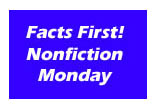 Bill Peet: An Autobiography
Bill Peet: An Autobiography
Written and Illustrated by: Bill Peet
Recommended Ages: 8 and up
As I've written before, I love Bill Peet. I think every child should go through a stage where they check out as many books of his as possible and discover the many worlds he created. If your child happens to be a fan of Bill Peet and wants to learn a little more about him, take a look at Bill Peet: An Autobiography. You'll learn a lot about the man, as well as the time period he lived in (1915-2002).
This was the second time I've read his autobiography and I was reminded of just how very strong his voice is in all of his books. In this case, you feel as if you are sitting across the room from him listening to him tell you the story of his life. It's a fascinating look for anybody who is interested in learning how Bill Peet came to be Bill Peet.
Peet was born in Indiana, and his father was drafted into the army for World War I when Bill was three. Although his father survived, he never came back to join his family full time, and Bill's mom and grandmother brought up Bill and his two brothers. He and his brothers spent much of their time outdoors on farms and in the woods, and you see how his childhood influenced so many of his books. Young Bill showed a lot of artistic talent at an early age, and drawing became his number one hobby as he "filled fat five-cent tablets" with his drawings.
One particularly interesting part of the book is the time Peet spent with Walt Disney Studios. He worked there over twenty years and shares some interesting and candid anecdotes about the place and Walt Disney himself. Peet worked on many movies including Pinnochio, Dumbo, and Cinderella (he created the mice). It was only after his stint with Disney that he decided to branch out and try writing and illustrating children's books.
Bill Peet's autobiography offers a unique, somewhat wry insight into a true talent. There are pencil illustrations on every page which draw the reader in, creating an appealing atmosphere. This would be a wonderful book to give a child who yearns to be a writer or an artist, for Bill Peet followed his dream from a very early age. He ends the book by stating that Chester the Worldly Pig was the most autobiographical of his books (see my previous review on Chester). As he wrote: "Those markings were on the pig from the very beginning just as my ambition to illustrate books was always there. But I never considered writing them, so I had grown far beyond my expectations."










